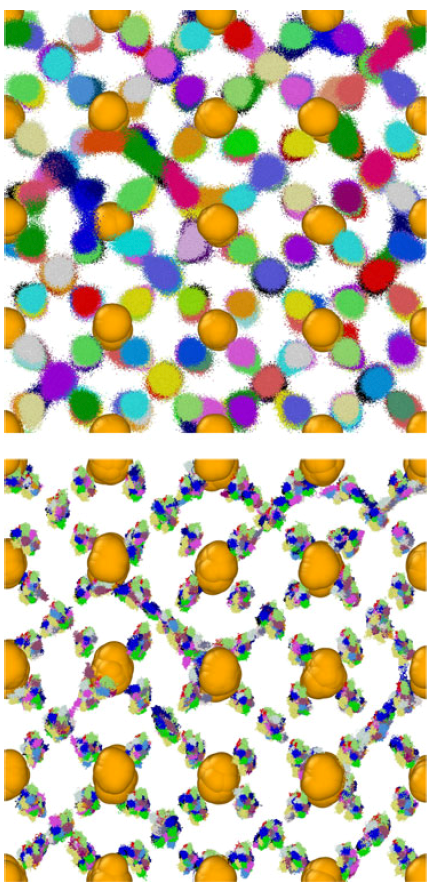Lanthanum polyhydride under pressures approaching those in the Earth’s core was the first experimentally confirmed superconductor exhibiting this remarkable phenomenon at temperatures surpassing 250 Kelvin. Yet despite the interest from both experimentalists and theorists this material has attracted, certain features of its behaviour have until now remained unexplained. One notable example is the initial increase of the superconducting critical temperature as higher pressures are applied.
In this work, we demonstrate that the key to understanding this feature is the presence of defects in the hydrogen sublattice of lanthanum polyhydride. Hydrogen, as the lightest element, exhibits strong quantum effects. These allow the hydrogen atoms to hop between different defect sites. The resulting lattice distortion causes the increase of the critical temperature with increasing pressure.
Figure caption: This figure compares the positions atoms explore over time without (bottom) and (with) quantum effects taken into account. We see that the hydrogen atoms are much more widely spread when quantum effects are included. This shows that they are essential for the hydrogen lattice to dynamically explore different configurations.
H. Wang, P. T. Salzbrenner, I. Errea, F. Peng, Z. Lu, H. Liu, L. Zhu, C. J. Pickard & Y. Yao, "Quantum structural fluxion in superconducting lanthanum polyhydride", Nat. Commun. 14 (2023) 1674

